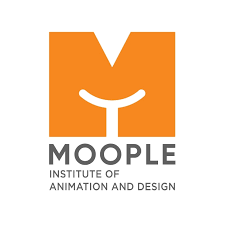Animation is a dynamic and creative field that combines art, technology, and storytelling. For many students who have completed their 12th grade, pursuing a degree in animation can be an exciting step towards a fulfilling career. Here’s a comprehensive guide on how to embark on this journey, with a spotlight on the Moople Institute of Animation and Design, a renowned institution in this domain.
Research and Choose the Right Institution
The first step in your animation career is selecting a degree in animation that offers specialized programs. One such institution is the Moople Institute of Animation and Design, known for its comprehensive curriculum and state-of-the-art facilities. When researching institutions, consider the following factors:
- Accreditation and reputation
- Course content and structure
- Faculty expertise
- Infrastructure and resources
- Placement opportunities
Understand the Eligibility Criteria
Most animation programs require you to have completed your 12th grade from a recognized board. Specific eligibility criteria may vary between institutions, but generally, you should have a basic understanding of subjects like art, design, and computer applications. It’s essential to check the exact requirements for the institutions you are interested in.
Select the Right Course
Animation institutes offer a variety of courses tailored to different aspects of animation. Here are some common options:
- Diploma in Animation: A shorter, focused program that provides foundational skills and knowledge.
- Bachelor’s Degree in Animation: Typically a 3 year program, such as B.Sc. in Animation degree course offering in-depth education in animation principles, techniques, and industry practices.
- Advanced Diploma Programs: These are usually more specialized and may focus on areas like 3D animation, visual effects, or game design.
Prepare for Entrance Exams (if any)
Some institutions may require you to take entrance exams to assess your aptitude and skills. These exams might test your creativity, drawing skills, and understanding of basic animation concepts. Preparing for these exams often involves:
- Practicing drawing and sketching
- Studying basic animation principles
- Developing a portfolio showcasing your artwork and projects
Application Process
Once you have selected your preferred B.Sc animation college, the next step is the application process. This generally includes:
- Filling out application forms
- Submitting academic transcripts and certificates
- Providing entrance exam scores (if applicable)
- Submitting a portfolio of your work (for some courses)
Financial Planning
Pursuing a degree in animation can involve significant financial investment. Consider the tuition fees, cost of materials, and other expenses. Explore options for scholarships, financial aid, or student loans that can help manage the costs.
Admission and Enrollment
After receiving acceptance letters from institutions, choose the one that best fits your needs and aspirations. Complete the enrollment process by submitting the necessary documents and paying the required fees.
Start Your Journey in Animation
With your admission secured for animation and VFX courses, it’s time to dive into your studies. Attend classes, participate in workshops, and make full use of the resources and opportunities provided by the institution. Engage with faculty and peers, as networking is a crucial part of building a successful career in animation.
Why Choose Moople Institute of Animation and Design?
The Moople Institute of Animation and Design stands out as an excellent choice for aspiring animators due to its:
- Comprehensive Curriculum: Covering various aspects of animation from basic principles to advanced techniques, ensuring you gain a well-rounded education.
- Experienced Faculty: Learn from industry professionals with extensive experience in the field.
- State-of-the-art Facilities: Access to cutting-edge software and hardware, allowing you to create professional-quality animations.
- Industry Connections: Opportunities for internships and placements with leading animation studios and companies, providing practical experience and job prospects.
- Creative Environment: A vibrant community of creative minds that fosters innovation, collaboration, and growth.
Conclusion
Pursuing a degree in animation after the 12th grade is a structured and exciting process that can lead to a rewarding career. By choosing the right institution, such as the Moople Institute of Animation and Design, and following the steps outlined above, you can embark on a journey that combines your passion for creativity with the skills needed to succeed in the animation industry.

